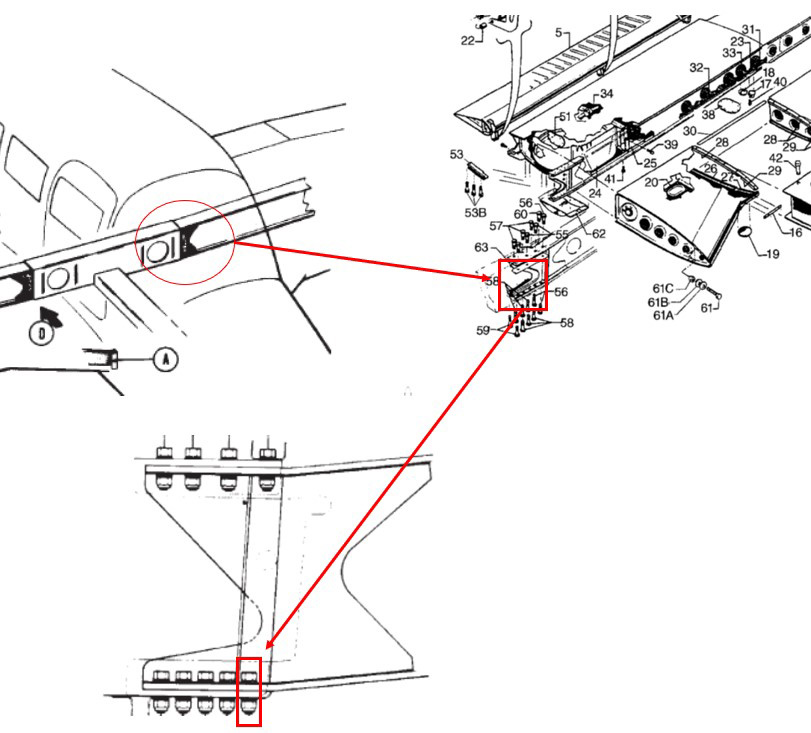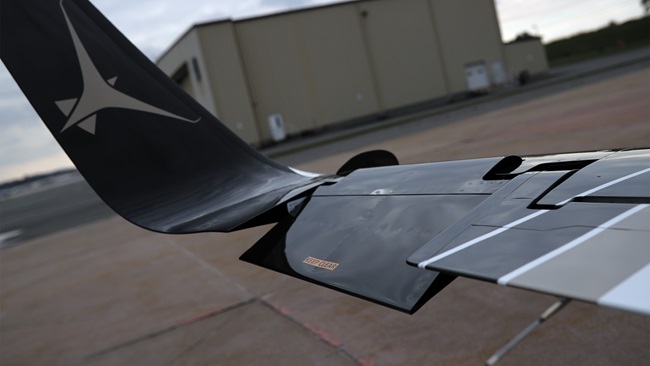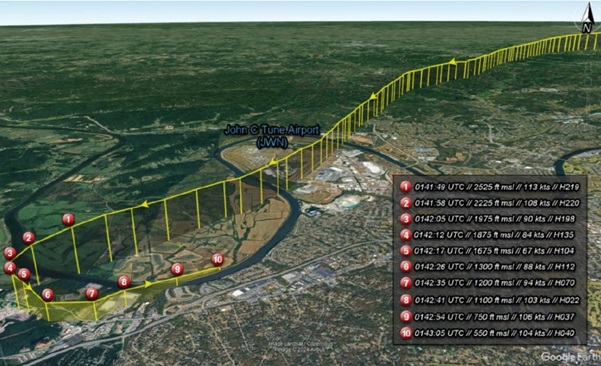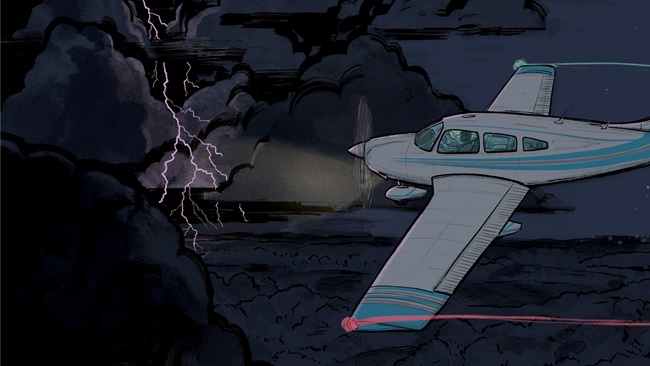NTSB finds metal fatigue in Piper wing
The NTSB released an investigation update May 15 detailing the metal fatigue found in the wing of a Piper Arrow operated by Embry-Riddle Aeronautical University that crashed April 4 when the left wing separated shortly after takeoff.
The crash claimed the lives of Embry-Riddle student Zachary Capra, 25, and designated pilot examiner John Azma, 61. The separated left wing came to rest about 200 yards from the rest of the aircraft wreckage. According to the NTSB preliminary report, Capra was flying his commercial checkride and the left wing separated not long after the pair departed Runway 25L at Daytona Beach International Airport following a touch-and-go.
NTSB investigators inspected on April 18 another Piper PA-28R-201 with a similar number of airframe hours and cycles that had also been used exclusively for flight training, and found “a crack indication at the left lower outboard forward wing spar attachment bolt hole. The crack measured about 0.040-inch long and deep. The airplane’s wings were subsequently reinstalled and examined using inspection procedures developed by Piper Aircraft. A bolt-hole eddy current inspection probe was used to confirm the location and size of the previously identified crack.”
The NTSB team reports nine other Piper Arrows were inspected under NTSB supervision using the same ECI technique, and no indications of a crack were detected. Investigators are reviewing corrective actions taken in response to the investigative findings of a 1987 crash involving in-flight wing separation of a PA-28-181 model, which resulted in three specific recommendations and an airworthiness directive that was later rescinded. The NTSB noted that the current investigation is ongoing, and no determination of probable cause has been made, and no conclusions should be drawn from the May 15 update.
AOPA Senior Director of Regulatory Affairs David Oord noted there have been several special airworthiness information bulletins and proposed ADs involving the accident airplane and similar Piper models.
“AOPA is hopeful the probable cause is determined as soon as possible so corrective actions can be swiftly implemented,” Oord said. “In the interim, we would encourage aircraft owners to examine their aircraft as soon as practical using Piper’s Service Bulletin inspection procedures.”





